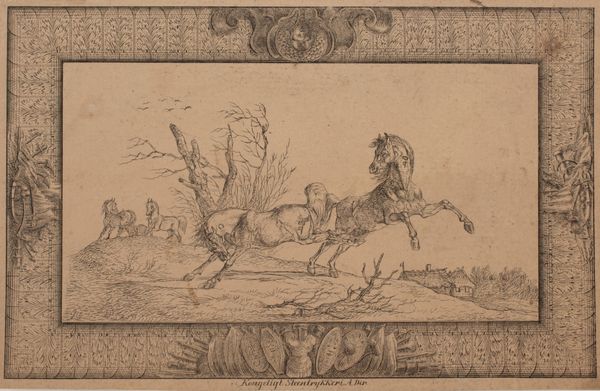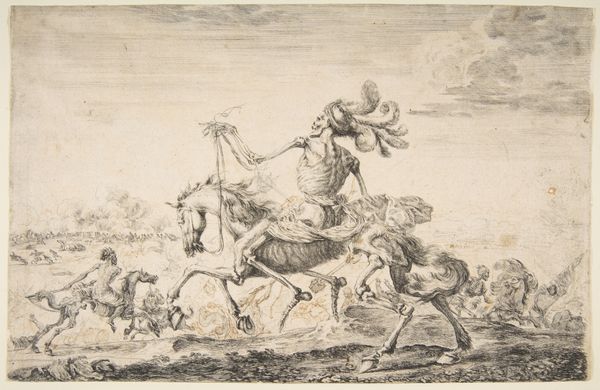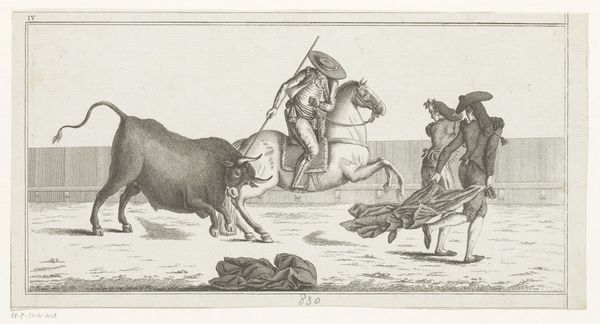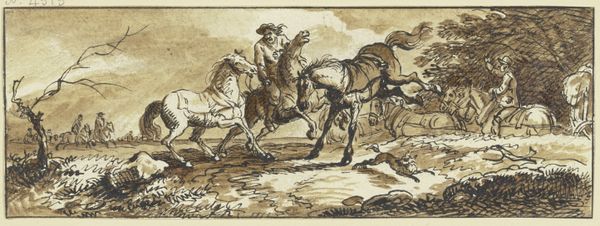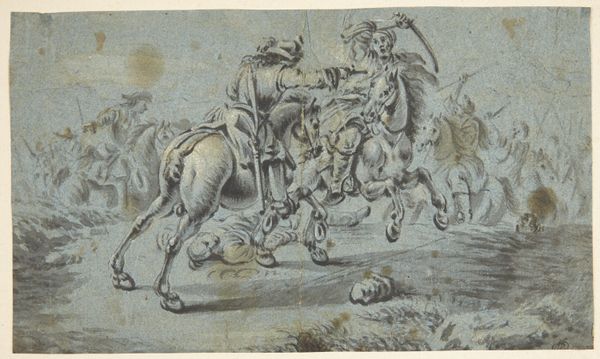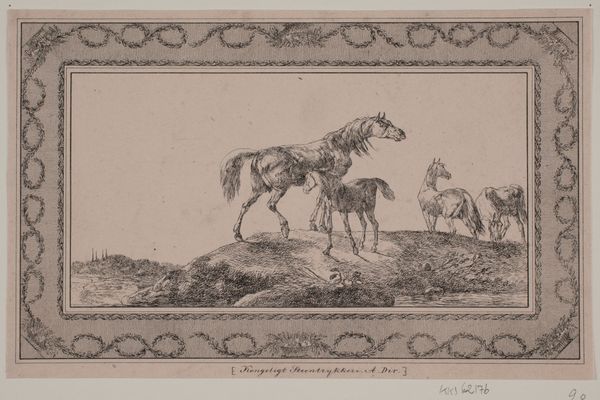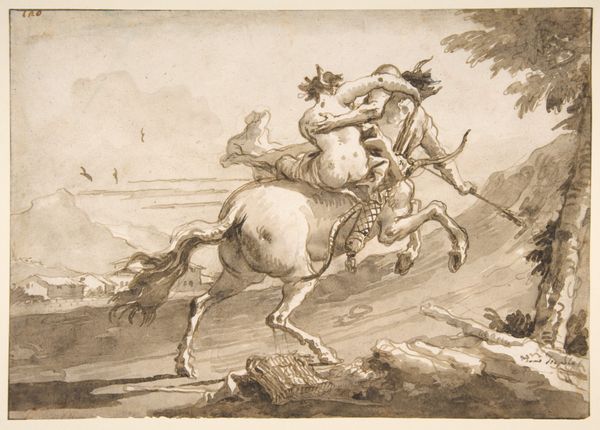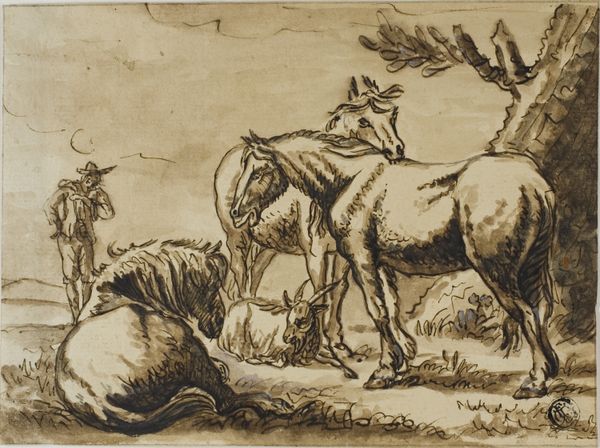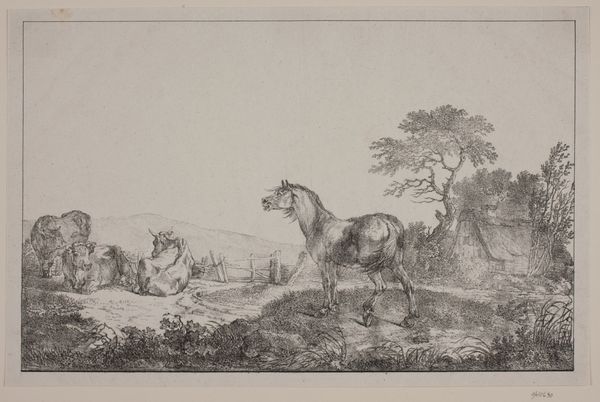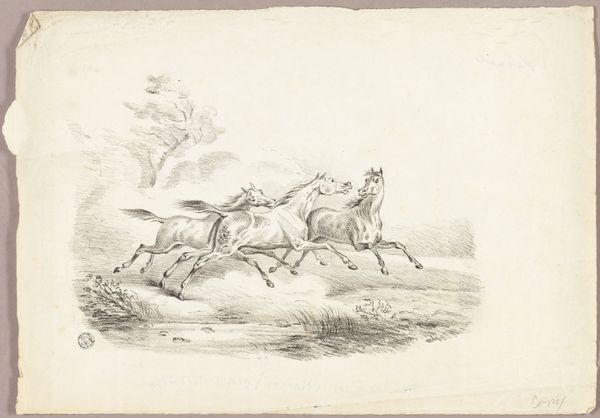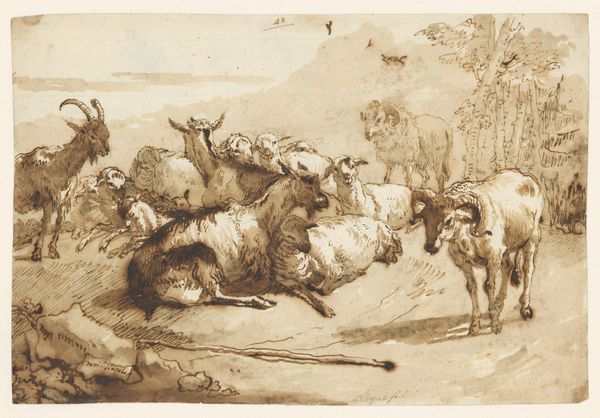
drawing, coloured-pencil, print, paper, ink, pencil, chalk
#
drawing
#
coloured-pencil
#
animal
# print
#
pencil sketch
#
landscape
#
figuration
#
paper
#
ink
#
coloured pencil
#
pencil
#
chalk
Dimensions: 187 × 245 mm
Copyright: Public Domain
Curator: This intriguing work is titled "Two Horses Fighting Dog" by Johann Georg Pforr, an artist working in the early 19th century. The piece uses colored pencil, chalk, ink and graphite on paper. Editor: The title promises conflict, and the artwork certainly delivers. I'm immediately struck by the tension. It feels almost theatrical, a stage set for a drama. There's something classical in its composition but rendered in such delicate materials. Curator: The use of those varied mediums really serves to depict a narrative of power, reflecting societal tensions of the time. Looking at it from an intersectional perspective, how might we interpret the animal dynamics within a patriarchal power structure? The dog’s positioning beneath the horses suggests a certain submissiveness, for instance, or even forced subservience. Editor: Interesting point. Visually, the dog certainly looks like a disruption – an interruption in the natural order. We often see the dog as a symbol of loyalty, yet here, it appears aggressive, maybe even goaded into action. This adds another layer to the dynamics of dominance being portrayed, don’t you think? It also reminds me of those images of royal hunts. Curator: Precisely! And notice the idyllic landscape. Even that seemingly tranquil setting has a symbolic weight, perhaps representing the fragility of peace maintained through unequal power relations. Consider how frequently artists deploy images of "nature" to excuse human social and political hierarchies as somehow 'natural' too. Editor: That's a vital connection to draw. On the other hand, could the image perhaps symbolize some personal struggle? We've often used the horse as emblematic of inner strength or unchecked passion, its stance here so agitated – raising one leg and about to either stomp the dog, or run away from the fight. Maybe Pforr projected a bit of himself into the animal figures as metaphors for psychological states? Curator: I think the beauty of the piece is that it accommodates both interpretations. We can analyze the sociopolitical implications while also recognizing the artwork's potential to express profound personal emotions. Editor: Indeed, by looking at those competing viewpoints we get a deeper understanding of this complex drawing and its possible meanings, both in its time and our own. Curator: Ultimately, I’m drawn to the subtle activism embedded in his work, highlighting themes relevant to power dynamics that persist to this day. Editor: It seems even seemingly simple images carry many potent symbolic truths. I will look at horses, dogs and landscapes in art with fresh eyes from now on!
Comments
No comments
Be the first to comment and join the conversation on the ultimate creative platform.

